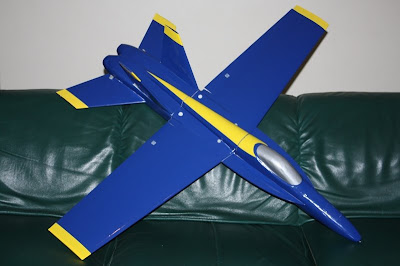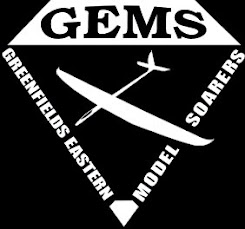Back to the Allegro build. I have progressed quite well on the tip panels. Before continuing I first had to read up again on the instructions to make sure I am not forgetting something. The next step was to make the hardwood inserts that go inline with the shearwebs at the dihedral breaks. This prevents the soft balsa from being crushed during launches. Then I sanded in the recesses for the carbon carry through strips so that the carbon spar caps would sit flush and not make unsightly bulges. The carry through strips were epoxied in place at this stage.

Time to get sticky again. After doing another dry mockup of all the components, I made up some "goop" with cabosil thickened epoxy. To keep everything true and straight I am working on a glass top. At first I though it may cause problems not being able to pin anything to a building board but if you take care in aligning the parts correctly and use some masking tape in strategic places it all works out quite well. The cabosil mix is quite sticky which aids in keeping everything aligned. Carefully weighing everything down with small sand bags ensures that nothing moves out of place while drying.
After curing overnight the next step was to carefully sand the edges of the spar slightly round to eliminate sharp edges. This is important as the you now have to wrap the spar with kevlar tow and you don't want the edges cutting the kevlar. The kevlar wraps prevent the sparcaps from delaminating from the shearwebs and buckling. I got the kevlar tow from unraveling kevlar tape that I bought from AMT. The actual wrapping is quite hard on the muscles in your hand. I found the trick was to wind the tow on a dowel which I pinched between my toes! This way I had both hands free to do the winding ;o) The ends are tacked with CA and the wraps then wetted out with epoxy. Any excess is dabbed off with a paper towel. I am really trying to keep weight down on this bird and any careless use of glues, epoxies etc quickly add up to unneccesary weight.
Not having to wait for the wraps to dry (they weren't going anywhere...) I proceeded to glue in the leading and trailing edges. The root rib is then glued in, gussets added and the tip sheets glued in. I decided to apply a technique I learned when building the Sagitta 900 that ensures perfectly straight, sharp and very robust trailing edges that can take quite a knock before showing hangar rash. The last 5-6 mm of trailing edge is sliced off with an exacto, a spruce strip glued in it's place and carefully sanded to the correct profile to blend in with balsa TE. You end up with superb trailing edges that you simply cannot obtain with balsa. And this is what the tip panels look like at this stage. Sheeting the panels to follow next.















.jpg)